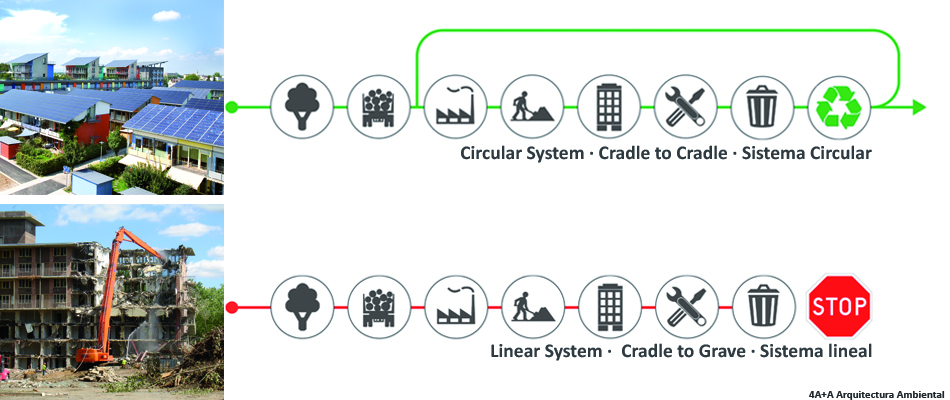SUSTAINABILITY AND ARCHITECTURE ( Part II)
WHAT CAN ARCHITECTURE DO IN ORDER TO IMPROVE SUSTAINABILITY?
We are at a critical moment, but it is a historic opportunity for both architecture and construction sectors to respond positively to Sustainability through a paradigm shift and improve the built environment.
This improvement can be achieved in different ways, but the most appropriate, in my opinion, should be given from the architecture itself primarily acting with passive design strategies. When we speak of bioclimatic design “passive” and “active”, these terms are used as boundaries to develop strategies with climate integration (passive) or (active) mechanical systems. The architecture must act according to two main objectives, than later I will develop in detail:
First, the energy efficiency must be dramatically increased in new buildings and refurbishment. We must strengthen the current trend in sustainable architecture design and construct buildings with zero energy consumption or almost zero; these are the called near Zero Energy Buildings (NZEB).
Second, it must be adopted a circular constructive model (Cradle to Cradle) that allows the reuse of construction wastes and so this way gradually abandon the current traditional linear model building (Cradle to Grave) which produces a great generation of waste.

GOAL ONE: Increase the energy efficiency of buildings. Strategies.
It can be achieved by developing three main strategies:
Reducing energy demand of buildings:
This can be achieved through passive design and architectural variables: Optimizing the built volume using a proper building form factor, controlling the openings ratio of facades and making the appropriate solar control, improving the constructive envelope with walls and woodwork with low thermal transmittance, eliminating thermal bridges and increasing tightness. And finally, through a bioclimatic approach, taking advantages of the natural site conditions, properly orienting the building, maximizing the use of natural lighting and ventilation and making the most of the thermal inertia of the used materials.
Increase the efficiency of active building systems.
Once lowering energy demand through passive strategies, the performance of active systems of a building is a crucial design issue. The goal is to reduce demand and energy consumption, reduce operating costs and maximize occupant comfort using efficient lighting, heating, ventilation and plumbing systems and also incorporating renewable energies such as solar thermal, solar photovoltaic, geothermal and biomass.
Improve the building management
The occupation phase of a building must be assessed in detail; because all the efforts and resources that have been taken into account in the project to achieve energy efficiency may be compromised and the targets missed. In this phase should be studied in detail the profile of occupation, use and building management, passive and active operations of the building, by means of implementing rigorous control and monitoring of energy consumption and comfort conditions for the occupants and also implementing an appropriate maintenance plan and integrated management. The potential savings from proper energy management could reach a 15-20% approximately.
GOAL TWO: Adopt a constructive model of closed life cycle. Strategies.
The construction-sector (professionals, technicians, manufacturers, installers, etc -) has begun to take positive steps, yet these have not been sufficiently decisive and important to establish a substantial improvement of Sustainability in the field of architecture.
The use of recycled and recyclable building materials, rapidly-renewable, natural, non-toxic, with low embodied energy in manufacture and locally produced should become a standard and not an exception to the rule in the market. Including Analysis of Life Cycle Assessment (LCA) and environmental product declarations (EPDs) in the manufacturing process must be a constant, since it is a positive fact that helps to spread the knowledge of the environmental performance of products and moreover to provide transparency to the construction sector.
Julio Bermejo architect · LEED AP BD+C
4A+A Arquitectura Ambiental
